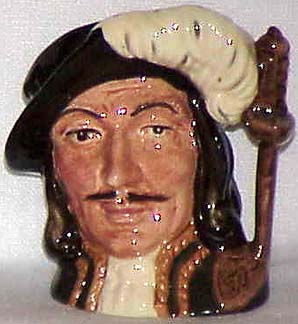skip to main |
skip to sidebar
Rescuing Wonder from Calvin's Icy Fingers
 Daniel Mitsui does it again. An excerpt from Religious Art in France of the 13th Century by Emile Mâle:
Daniel Mitsui does it again. An excerpt from Religious Art in France of the 13th Century by Emile Mâle: The historian of art has no right to scorn the relics. It should be remembered that the Sainte-Chapelle, the most perfect of thirteenth-century buildings, was a shrine destined to enclose the crown of thorns. And the most beautiful mystic dream of the Middle Ages, the sangrail itself, what is it but a reliquary?
Calvin dissipated all this poetry in a breath. With his reasoning and his rude vigour he demonstrated to the poor world that God is everywhere, and that it is not necessary to make long journeys and like pagans to adore doubtful relics. Pray, he says in his Traite des reliques, has not the world gone mad to travel five or six score miles at great cost and pains to see a flag (the holy shroud at Cadouin) about which one can have no assurance, but rather be constrained to doubt?. Nothing finds mercy at the hands of this terrible iconoclast; none of those memories which should be dealt with tenderly, neither the water-pot of the marriage at Cana which was shown at Angers, nor the tear shed by Christ for Lazarus which was enshrined at Vendôme, nor the pictures which had been painted by angels, for one knows that it is not the metier of angels to be painters.
The world emerged from the age of poetry. The enthusiasm of the Crusaders who went to defend an empty tomb, and brought back a little holy earth as the greatest of treasures, henceforth appeared as inexplicable folly. As a matter of fact, said Calvin, they consumed their bodies and their goods, and a large part of their countries' substance, in order to bring back a pile of foolish little things with which they had been gammoned, believing them to be the most precious jewels in the world.
Such was, in fact, the feeling of the Crusaders who in the thirteenth century sent a host of relics to the churches of Champagne, the Île de France and Picardy, from Constantinople. These matchless treasures, which were enclosed in precious wallets, had a certain influence upon art...More>>
 Daniel Mitsui does it again. An excerpt from Religious Art in France of the 13th Century by Emile Mâle:
Daniel Mitsui does it again. An excerpt from Religious Art in France of the 13th Century by Emile Mâle: 








No comments:
Post a Comment